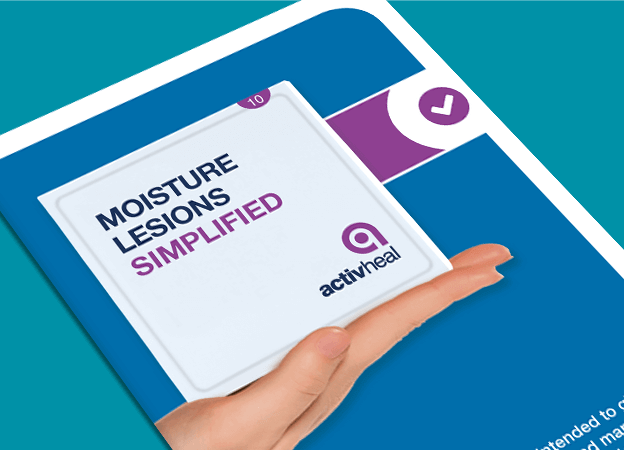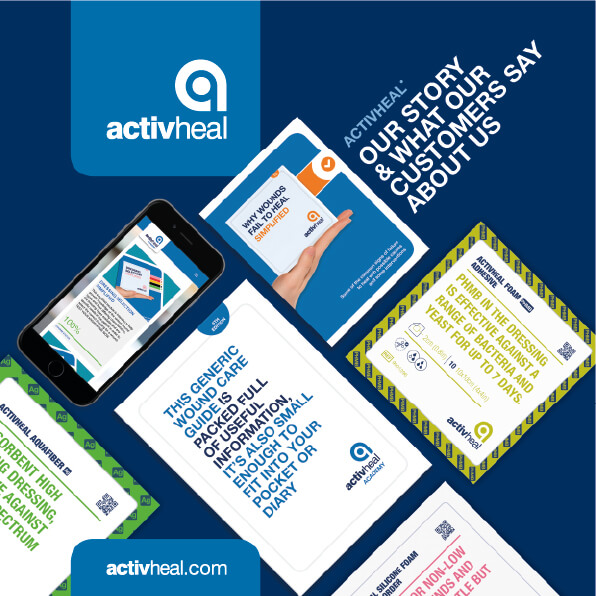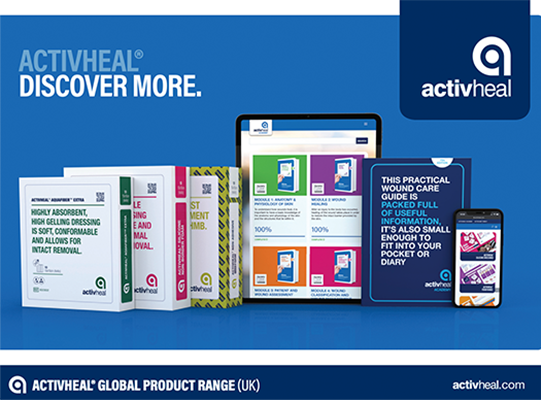Moisture lesion v pressure ulcer – how to differentiate
Moisture lesion v pressure ulcer – how to differentiate

Our online education is ideal for a basic understanding of wound care. Test your knowledge sections and certificates are also available to download once the module has been completed. It’s freely available to all!
A moisture lesion is defined as being caused by urine and/or faeces and perspiration which is in continuous contact with intact skin of the perineum, buttocks, groins, inner thighs, natal cleft, skin folds and where skin is in contact with skin1. Often misdiagnosed as Grade II pressure damage,moisture lesions can occur in any age group, where prolonged exposure to bodily fluids causes the skin to become increasingly permeable, making it weaker and less elastic, and more susceptible to physical damage from friction and shearing forces2.
There are a number of characteristics that help to differentiate a moisture lesion from a pressure ulcer outlined in the table below3.
| Pressure Ulcer | Moisture lesion |
| History of immobility, short or long term | History of faecal and/or urinary incontinence |
| Will be circular and symmetrical in shape | May be associated with sweating in skin folds or natal cleft |
| May take on a butterfly wing shape if it spans out from sacrum | Irregular and asymmetrical shape |
| Will be over a bony prominence (unless a piece of equipment is the cause) | Lesions will be over fatty parts of the buttocks and thighs, and are not isolated to being located over the bony prominences |
| May have necrotic or thick sloughy tissue present | Lesions may extend into perineal area, scrotum and vulva |
| If associated with an external device causing the pressure the lesion will take the shape of the device | Usually there is no necrotic tissue or slough |
| Grade according to EPUAP classification tool | Do not grade |
To read more about moisture lesions and the four types of moisture associated skin damage why not download or new Moisture Lesion Simplified Guide. We have nine new Simplified Guides that cover a range of topics including pressure ulcers and pressure ulcer prevention which will help guide your decision making.
1. All Wales Tissue Viability Nurse Forum 2014
2. Beeckman, D., Schoonhoven, L., Verhage, S., Heyneman, A., Defloor, T. (2009) Prevention and treatment of incontinence associated dermatitis: literature review: Journal of Advanced Nursing 65(6): 1141-54
3. Guy, H. 2012) The difference between moisture lesions and pressure ulcers. Wound essentials, Wounds UK. 1: 36- 44
Discover ActivHeal®
Social Media
Our Product Range
AMS Group
ActivHeal®, its logo and the Advanced Medical Solutions logos are registered trademarks of Advanced Medical Solutions Ltd.
Copyright © Advanced Medical Solutions Limited | Design by Lumisi Ltd


